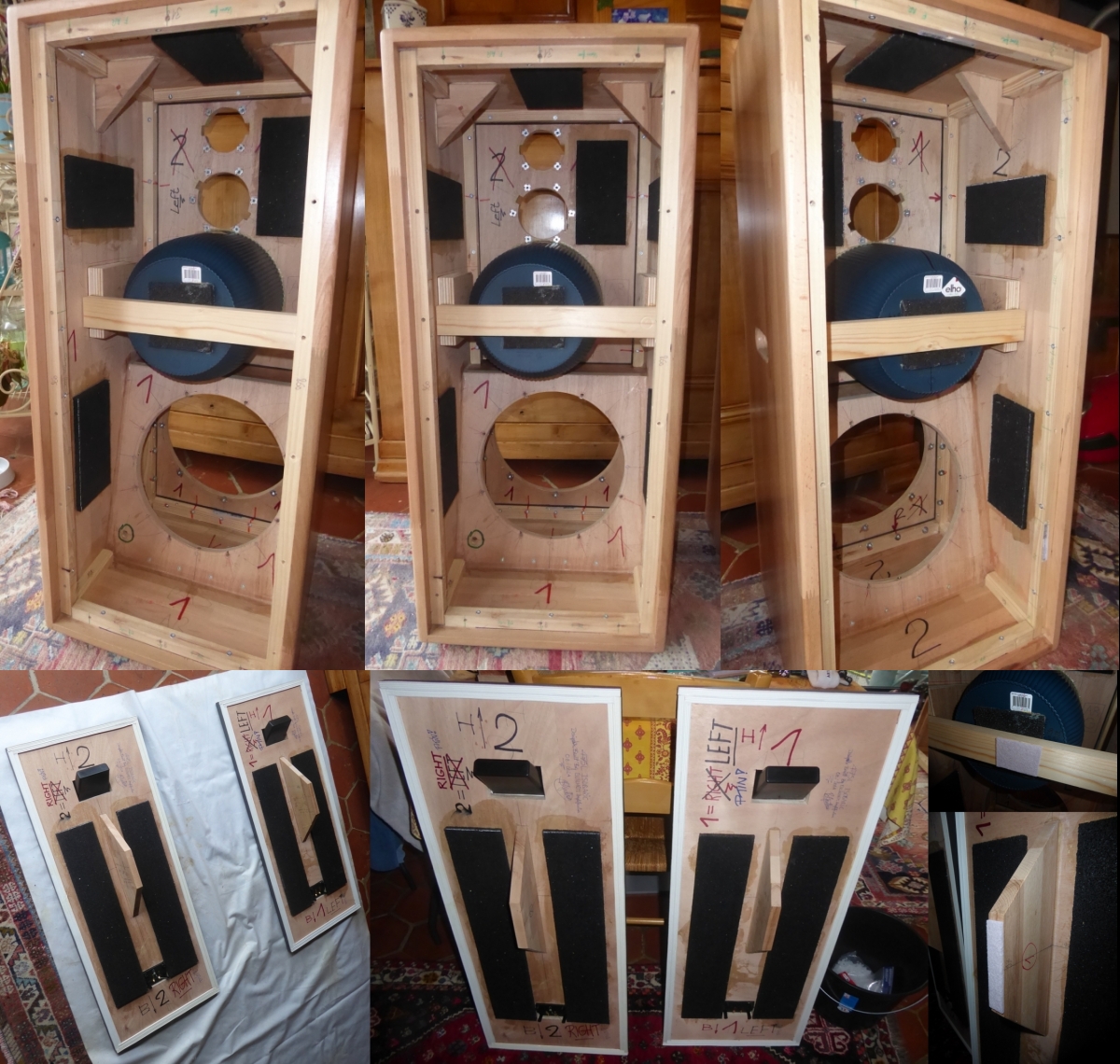I installed VituixCAD and I am trying to set up correctly the parameters - using your examples @kaameelis... 😉
T
T
I think series filter simulation without real drivers impedance data is not really usable. I get this understanding when I was simulating 3-way series filter with driver impedance.
I made 4 way filter simulation with Dayton drivers as for them can be downloaded SPL and impedance data. I selected closest driver possible to originally defined.
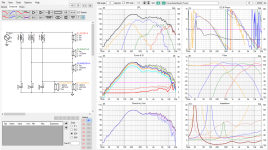
To visualize drivers response data, I made dummy simulation without filter elements.
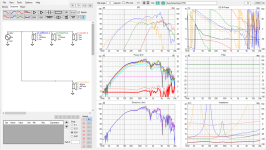
When I was selecting drivers, I find Beyma T3020 and SB MD60N-6 polar response did not fit together very well on 8-10 kHz.

To visualize drivers response data, I made dummy simulation without filter elements.

When I was selecting drivers, I find Beyma T3020 and SB MD60N-6 polar response did not fit together very well on 8-10 kHz.
When I was selecting drivers, I find Beyma T3020 and SB MD60N-6 polar response did not fit together very well on 8-10 kHz.
Yes. That's possible... 😕
Beyma T2030 polar pattern, vs. Beyma CP21/F - the model that I have on my 375L :
I went for the T2030 because I inherited 4 brand new boxed units... I managed to offer the possibility to change for CP21/F if needed.
Satori MD60N :
Since my speakers are placed 15° off-axis from the listening position, it's probably not so dramatic. 🤔
Wait and See - or rather Wait and Hear ! 😉
T
Attachments
Solution can be to bring filter frequency down to about 5 kHz.
Polar plot influence on sound radiated to room and this sound will be reflected to listening position from room.
Polar plot influence on sound radiated to room and this sound will be reflected to listening position from room.
Last edited:
Solution can be to bring filter frequency down to about 5 kHz.
Polar plot influence on sound radiated to room and this sound will be reflected to listening position from room.
Yes. That's what I have in my 3-ways 375L... Where there's no Hi-Mid MD60N speaker ! 😀
But if I cut the Lo Mid 8M60N under 2000-3000Hz, it's possible that the timbre maybe not suitable on voices (by my experience and personal taste, I try to avoid an FC in the 500-1500Hz for that reason)... 😕
That said, maybe the MD60N can work on a 2500-6000Hz range ? My first intention was 3000-7000... A test will tell us : I note to lower the FC between Hi-Mid and Tweeter as down as 5kHz - Who knows ? 😉
My dedicated little auditorium is a near-field listening one, something like a studio console if I can say so - I mean : I do not have the sound reflections that you usually find in a living-room. By chance, there's no noticeable tone or resonance flaws... 😎
The listening distance is 2.50m to 3m, and the incidence with the 375L is 2x 15° horizontal, the 375L enclosure being stanted at 8.3° to be in the minimum inter-speaker delay, to avoid vertical directivity issues at the listening position.
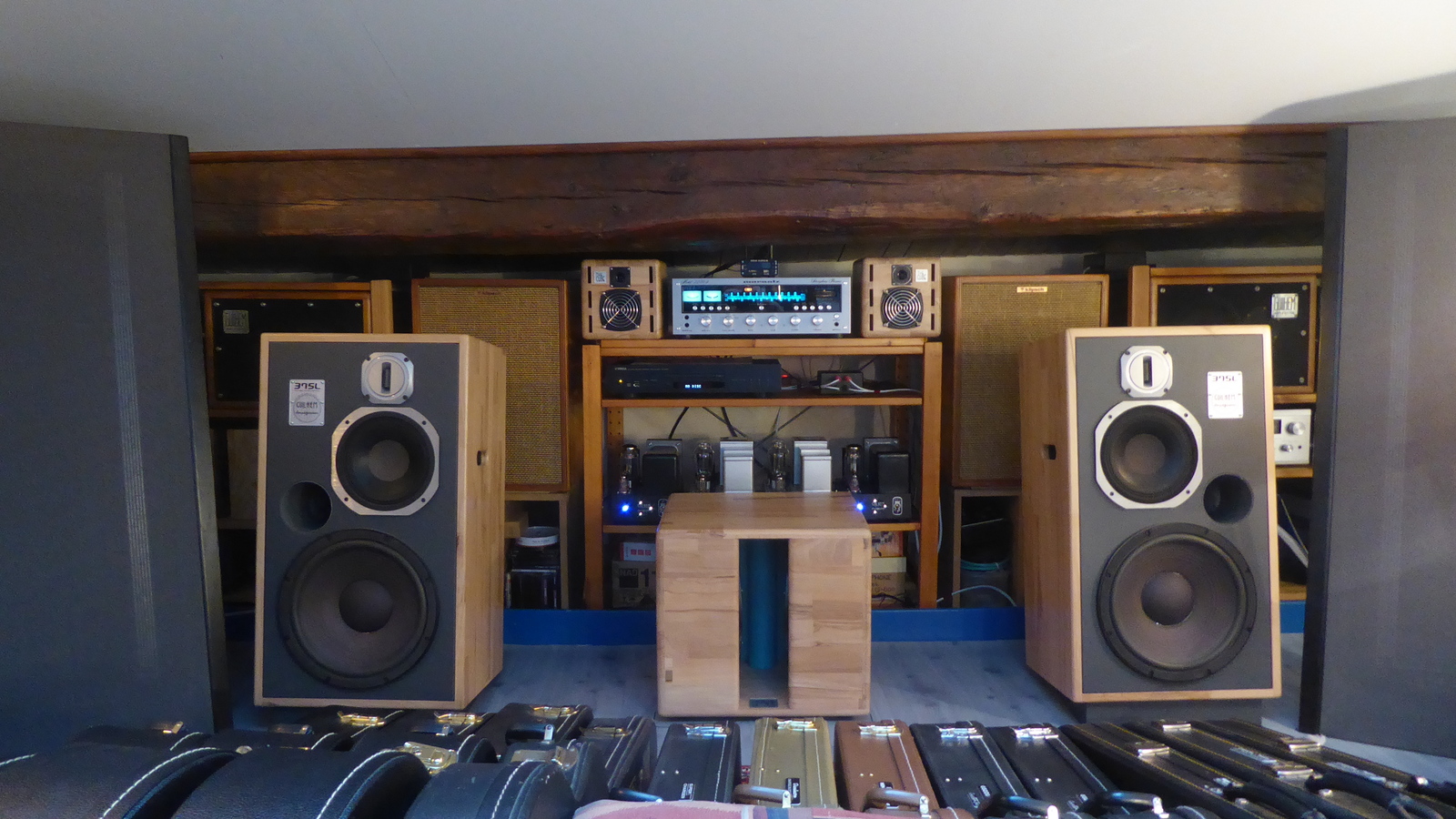
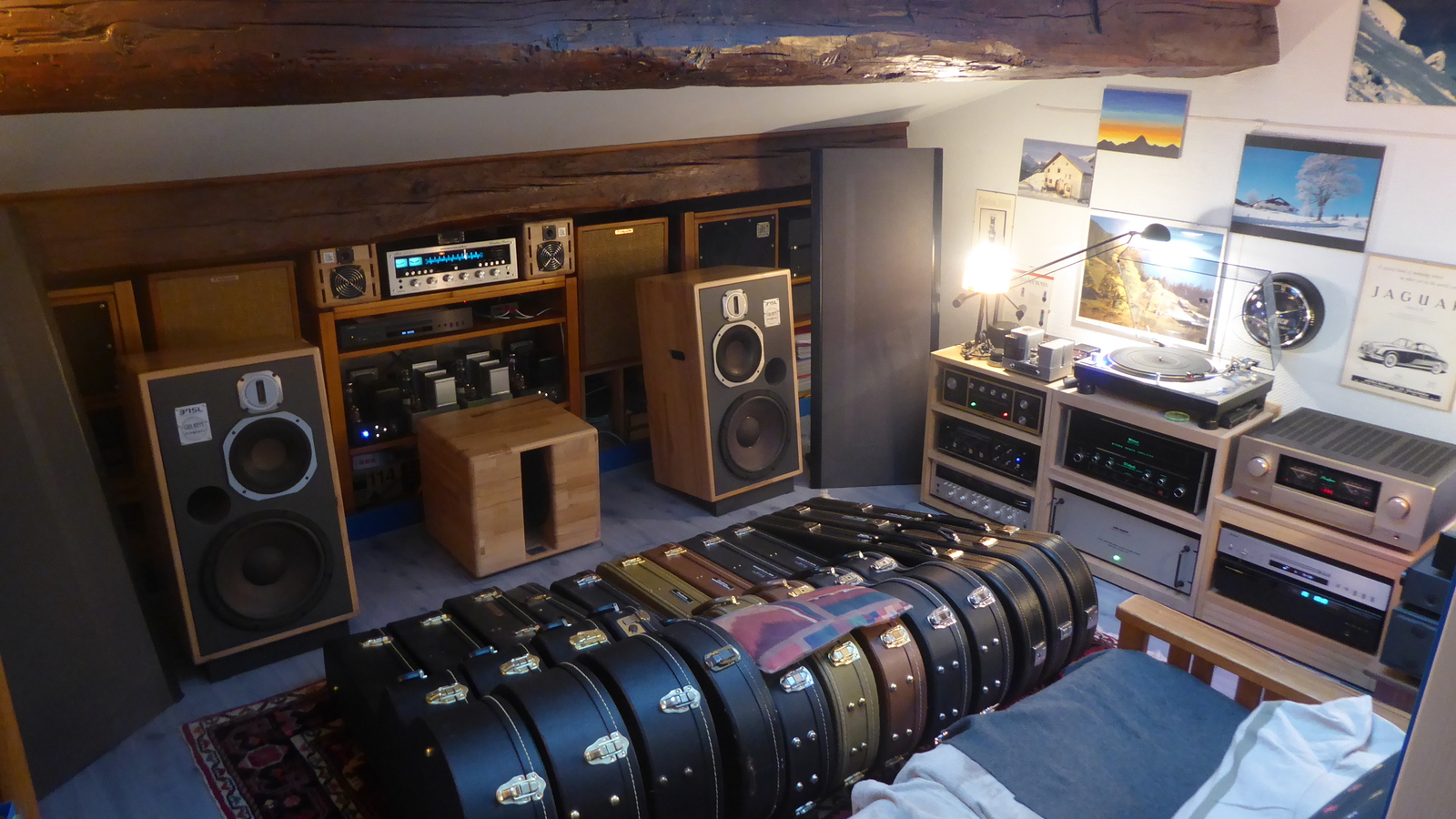
Surprisingly, the 375L are not very directive in the vertical plan when slanted to 8.3°, as test demonstrated it in an Audio friend's large auditorium :
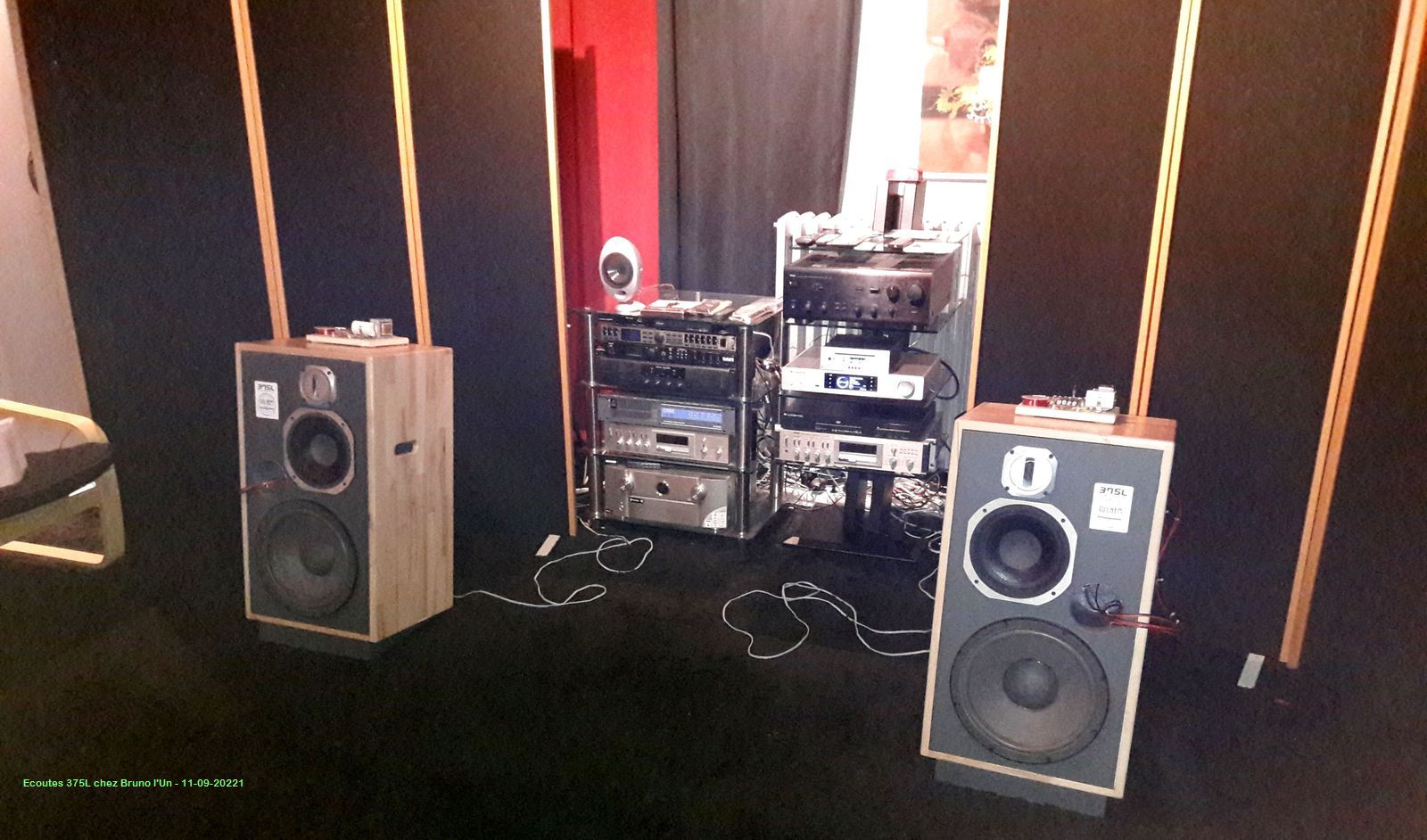
The choice of the speakers, the FC (400Hz / 5000Hz), the unusual serial-parallel crossover certainly hold a responsibility in the result... Along with some Luck, possibly ! 🙂😉
T
In my understanding MD60N can be used from about 800 Hz. Look THD measurements from https://hificompass.com/en/speakers/measurements/satori/satori-md60n-6#
Upper limit is somewhere about 5-6 kHz.
General suggestion is to avoid filter cut frequencies in in most sensitive hearing range 1-5 kHz and MD60N can cover this range very well.
Upper limit is somewhere about 5-6 kHz.
General suggestion is to avoid filter cut frequencies in in most sensitive hearing range 1-5 kHz and MD60N can cover this range very well.
Last edited:
Construction finished 😥... Awaiting first tests now !




Temporary speaker connection plate at the upper back....

Awaiting engraved front face nameplates...

T
Temporary speaker connection plate at the upper back....
Awaiting engraved front face nameplates...
T
Last edited:
The weight for each 475L enclosure - finished in working order - is circa 38.5kg... That's 8,5kg more than my "lightweight 30kg" 375L models.
With no surprises, the 475L has reached the upper limit of transportability for me... And the integrated handles proves here their total usefulness !
T
With no surprises, the 475L has reached the upper limit of transportability for me... And the integrated handles proves here their total usefulness !
T
Some decision made in this design are not clear for me: not glued to sides front and back panels, not flush mounted tweeter and upper midrange.
Looks a bit like the DIYS speaker we did 45 years ago. Lots of screws, hardly any bracing and no router in the house, to sink the chassis.
Some decision made in this design are not clear for me: not glued to sides front and back panels, not flush mounted tweeter and upper midrange.
- In case of issue or modification, you can open the back (easy) or remove the front (more difficult) to have full access inside.
- The Simili covering can be replaced in case of damage or change in taste.
- The Simili also acts as a gasket for each speaker.
Looks a bit like the DIYS speaker we did 45 years ago. Lots of screws, hardly any bracing and no router in the house, to sink the chassis.
Ce n'est jamais bien vu de ne pas faire comme tout le monde... Surtout par ceux qui ne font pas grand chose ! 😀 😀 😀
T
You should really mont the chassis flush with the baffle. It makes it much simpler to get the crossover right.
Here is a picture how you can rebate the chassisneven with the holes cut as you need a center:
https://www.danmarx.org/audioinnovation/daytonhivi/newspeakers (19).jpg
Here is a picture how you can rebate the chassisneven with the holes cut as you need a center:
https://www.danmarx.org/audioinnovation/daytonhivi/newspeakers (19).jpg
Last edited:
Yes, I sometimes do flush mounts on small speakers :


I must confess that I did it here mainly for the aesthetics...
A friend of mine built the same box for a primary test using the same speaker (Markaudio Alpair 10.3M) and port (63mm PVC tube), but with leftover 19mm particle wood instead of Glulam Beechwood, and without any flush mount (sorry, no pics taken, this prototype has been "recycled" since then)...
We compared both enclosures and no significant audible difference was noted. My friend built finally his pair using 18mm MDF panels, and made no flush mounting but built a removable frame / acoustic cloth frontface, instead of the Fan Grid I used... Again, no great sonic difference were observed.
At worse, it seemed to us that the acoustic cloth frontface very slightly "smoothed" the highs when listened in the axis, compared to the Fan Grid...
T
I must confess that I did it here mainly for the aesthetics...
A friend of mine built the same box for a primary test using the same speaker (Markaudio Alpair 10.3M) and port (63mm PVC tube), but with leftover 19mm particle wood instead of Glulam Beechwood, and without any flush mount (sorry, no pics taken, this prototype has been "recycled" since then)...
We compared both enclosures and no significant audible difference was noted. My friend built finally his pair using 18mm MDF panels, and made no flush mounting but built a removable frame / acoustic cloth frontface, instead of the Fan Grid I used... Again, no great sonic difference were observed.
At worse, it seemed to us that the acoustic cloth frontface very slightly "smoothed" the highs when listened in the axis, compared to the Fan Grid...
T
If you would measure, even better under different angles, you could see how flush mounting cleans up the response. Just like the position of a tweeter on the baffle will change it's response as well. You will not hear it unless you supply a 100% compareable setup with the option to switch objects while listening and have well trained hearing. Without training and references you don't even know what difference you should hear.
Any edge near the chassis has an influence on reproduction. Just like you will be unable to "hear" the differences in hard and smoothed baffles by simple listening.
You memory for audio is only a few seconds. For example, you will be able to detect a 0.5dB difference in SPL if you switch A-B without a pause. You are unable to do so with even a 5 second pause between the two sources. Just try it...
In the long therm listening, such small details make the differences between a good and somehow not so good anf less satisfying speaker. All these tiny things add up.
Any edge near the chassis has an influence on reproduction. Just like you will be unable to "hear" the differences in hard and smoothed baffles by simple listening.
You memory for audio is only a few seconds. For example, you will be able to detect a 0.5dB difference in SPL if you switch A-B without a pause. You are unable to do so with even a 5 second pause between the two sources. Just try it...
In the long therm listening, such small details make the differences between a good and somehow not so good anf less satisfying speaker. All these tiny things add up.
Obviously, any serious comparison we made are instant-switched A/B comparisons - as far as it is technically possible... Others are not really comparisons per se, but listenings, that's a different task. When I write "no significant difference" means that when we A/B 'ed, we did not notice a an indisputable, valuable (worth) or repeatable difference between A and B.
What I am sensitive to is the timbre and the synchronisation of the speakers. This is certainly because I play music for more than 30 years in bands of all sorts which gives me a different sensivity than the usual Audiophile.
The linearity of a frequency response is then less of a concern to me than a lively balanced response, which doesn't denotes necessarily a high linearity - because I have "real live music" references that many audiophiles do not have...
How many reputed and costy loudspeakers I listened to, which were designed with great attention to details, sounded so dull, reproducing dead small cymbals and rim shots, snare drums, or disguising the voices ? I can't even list them ! 😕
I'll cite Bob Crites, from Crites Audio, specialized in Klipsch replacement / improvement parts :

But it's me, OK ? 😉
What I am sensitive to is the timbre and the synchronisation of the speakers. This is certainly because I play music for more than 30 years in bands of all sorts which gives me a different sensivity than the usual Audiophile.
The linearity of a frequency response is then less of a concern to me than a lively balanced response, which doesn't denotes necessarily a high linearity - because I have "real live music" references that many audiophiles do not have...
How many reputed and costy loudspeakers I listened to, which were designed with great attention to details, sounded so dull, reproducing dead small cymbals and rim shots, snare drums, or disguising the voices ? I can't even list them ! 😕
I'll cite Bob Crites, from Crites Audio, specialized in Klipsch replacement / improvement parts :
But it's me, OK ? 😉
First test with the 612SP-4W ptototype filter :


Over the unsurprising imbalance of the speakers (in theory WF=93dB/LM=95dB/HM=94dB/TW=95dB), there's no major flaw in the timbre... Next step : balancing the relative levels of the speakers. I'll start with L-pads at -3dB (TW/LM) and -2dB (HM) to already hear what it sounds like.
Wait and See ! 😉
T
Over the unsurprising imbalance of the speakers (in theory WF=93dB/LM=95dB/HM=94dB/TW=95dB), there's no major flaw in the timbre... Next step : balancing the relative levels of the speakers. I'll start with L-pads at -3dB (TW/LM) and -2dB (HM) to already hear what it sounds like.
Wait and See ! 😉
T
- Home
- Loudspeakers
- Multi-Way
- ISOBARIC sealed enclosure... Any experiences? Any advantages?

